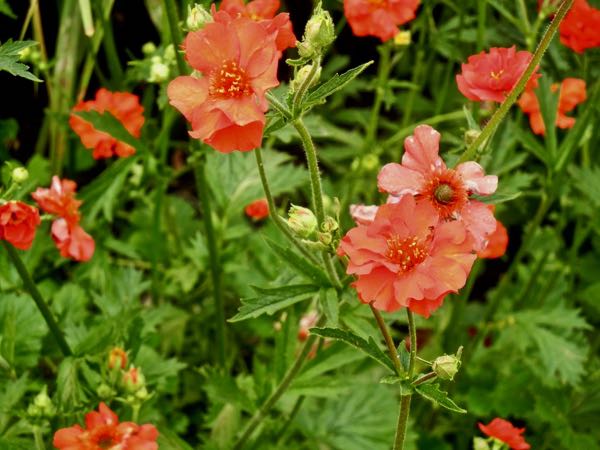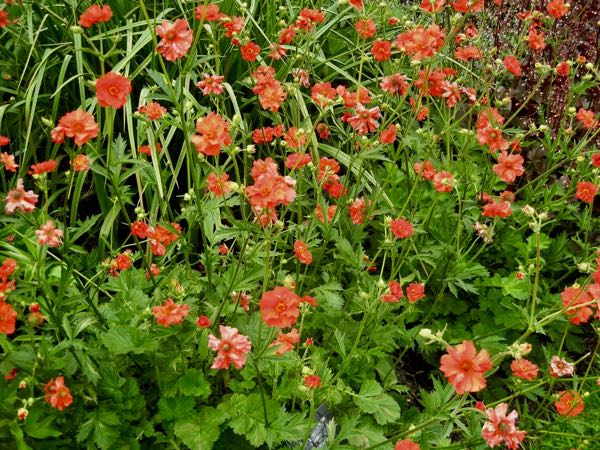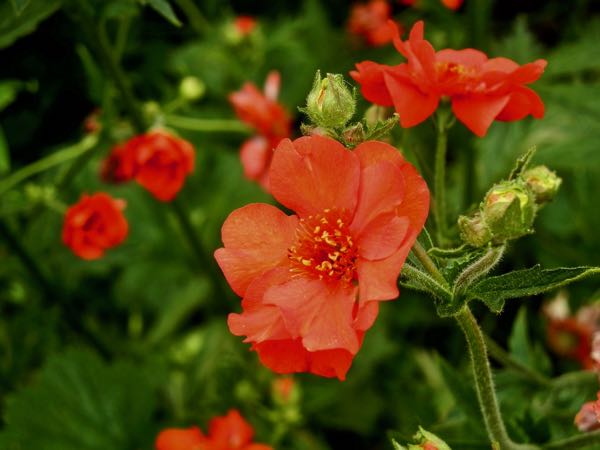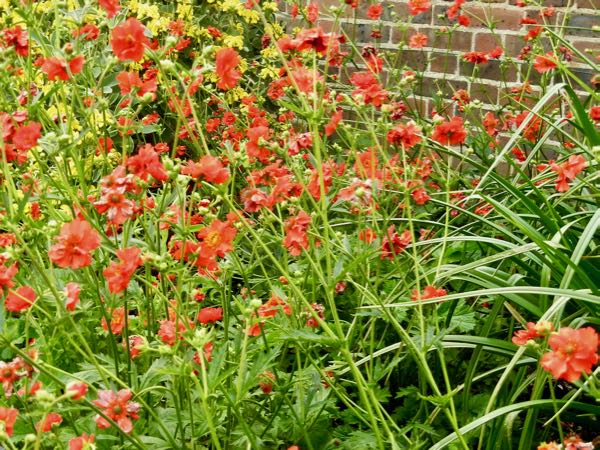Geum ‘Mrs J. Bradshaw’: Unveiling the Vibrant Avens Cultivar
Geum ‘Mrs J. Bradshaw’, also known as Avens ‘Mrs J. Bradshaw’, Geum quellyon, Scarlet Avens, Chilean Avens, Double Bloody Mary, Grecian Rose, or Geum chiloense ‘Mrs. Bradshaw’, is a captivating herbaceous perennial that belongs to the Rosaceae family of plants. This cultivar of Geum quellyon is native to Chile and has gained popularity for its striking flowers and distinct characteristics. Let’s delve into the background, description, cultivation, and propagation of Geum ‘Mrs J. Bradshaw’.
Background and Origin: An Intrepid Journey
Geum ‘Mrs J. Bradshaw’ traces its roots to Geum quellyon, which is native to Chile. The cultivar was first introduced or discovered, and subsequently named after Mrs. J. Bradshaw, whose contribution to its popularity and recognition is celebrated. Since then, Geum ‘Mrs J. Bradshaw’ has become a cherished addition to gardens worldwide, captivating gardeners with its vibrant blooms.
Characteristics and Description: A Fiery Display
Geum ‘Mrs J. Bradshaw’ is a vigorous herbaceous perennial that reaches a height of about 18 inches (45 cm). It forms clumps of dark green, pinnate leaves with a hairy texture, creating an attractive rosette at the base of the plant. However, it is the flowers that truly steal the show.
During the summer months, Geum ‘Mrs J. Bradshaw’ produces long stems adorned with semi-double, bright orange-red flowers. These blossoms, measuring approximately 1.5 inches (4.5 cm) in diameter, create a stunning display of fiery color in the garden. Not only are they visually captivating, but they also emit a sweet fragrance, enhancing the sensory experience of the garden.
Flowering Season and Aroma: A Summertime Delight
Geum ‘Mrs J. Bradshaw’ delights gardeners with its vibrant blooms during the summer season, typically from June to September. The flowers, resplendent in their bright orange-red hues, are a welcome addition to any garden, providing a burst of color and attracting pollinators such as bees.
Moreover, as the flowers grace the garden with their presence, they release a gentle and pleasant fragrance. This aromatic quality adds another dimension to the overall allure of Geum ‘Mrs J. Bradshaw’, making it an even more enchanting choice for garden enthusiasts.
Cultivation: Growing Geum ‘Mrs J. Bradshaw’
Sunlight: Geum ‘Mrs J. Bradshaw’ thrives in a location that receives full sun to partial shade. It appreciates the cooler parts of the garden, ensuring the ideal balance between sunlight and shade.
Watering: Regular watering is crucial for Geum ‘Mrs J. Bradshaw’, particularly during hot and dry periods. It is essential to provide deep watering, allowing the soil to dry out between waterings. This approach promotes healthy growth and prevents waterlogged conditions.
Soil: Geum ‘Mrs J. Bradshaw’ thrives in moist, well-drained soil with a loamy texture. If the soil is sandy or clayey, amending it with compost or manure can improve its drainage and fertility, creating an optimal growing environment for the plant.
Pests and Disease: While Geum ‘Mrs J. Bradshaw’ is generally disease-free, it may occasionally be susceptible to powdery mildew and rust. Prompt treatment with appropriate fungicides is recommended if any signs of these diseases appear. In terms of pests, watch out for aphids, slugs, and snails. Treating the plant with insecticides or using snail bait can effectively control these pests and prevent damage.
Propagation: Geum ‘Mrs J. Bradshaw’ can be propagated through division or seed. The division is the most common method and is typically done in spring or fall. By carefully dividing the plant into two or three sections, each containing several roots, new plants can be established in different locations. Alternatively, seed propagation can be attempted by sowing the seeds in well-drained soil in pots during spring. Germination usually occurs within 2 to 4 weeks.

Adaptable and Alluring: Geum ‘Mrs J. Bradshaw’ in the Garden
Geum ‘Mrs J. Bradshaw’ is a versatile plant that brings beauty and charm to various garden settings. Its stunning flowers and dark green foliage make it an excellent choice for perennial borders, butterfly gardens, rock gardens, and cottage gardens. It can also be grown in containers, adding vibrant color to patios and balconies.
Notably, Geum ‘Mrs J. Bradshaw’ is deer and rabbit resistant, making it an appealing option for those dealing with animal browsing. Furthermore, its blossoms act as a magnet for butterflies, hummingbirds, and bees, enhancing the ecological value of the garden.
Preserving the Beauty: Maintenance and Care
To ensure continuous blooming, it is advisable to remove spent flower stems through deadheading. This process involves pinching or cutting off the faded flowers at the base, stimulating the production of new blooms. Pruning is generally not necessary for Geum ‘Mrs J. Bradshaw’. However, cutting back the plant in spring can encourage fresh growth and rejuvenation.
In Conclusion: Geum ‘Mrs J. Bradshaw’ Shines Bright
Geum ‘Mrs J. Bradshaw’ stands as a testament to the allure of flowering perennials. With its fiery orange-red blossoms, pleasant fragrance, and adaptability, it captivates the hearts of gardeners worldwide. By following the cultivation and care guidelines, garden enthusiasts can enjoy the vibrant beauty and charm of Geum ‘Mrs J. Bradshaw’ in their own gardens, fostering a connection with nature’s splendor and enriching the overall appeal of outdoor spaces.



Also, read about Geum coccineum ‘Borisii’



